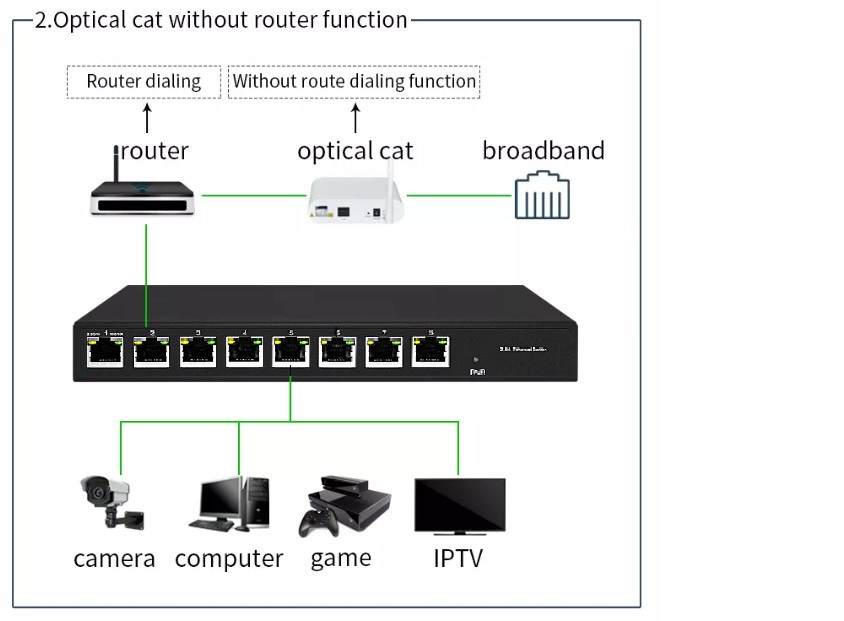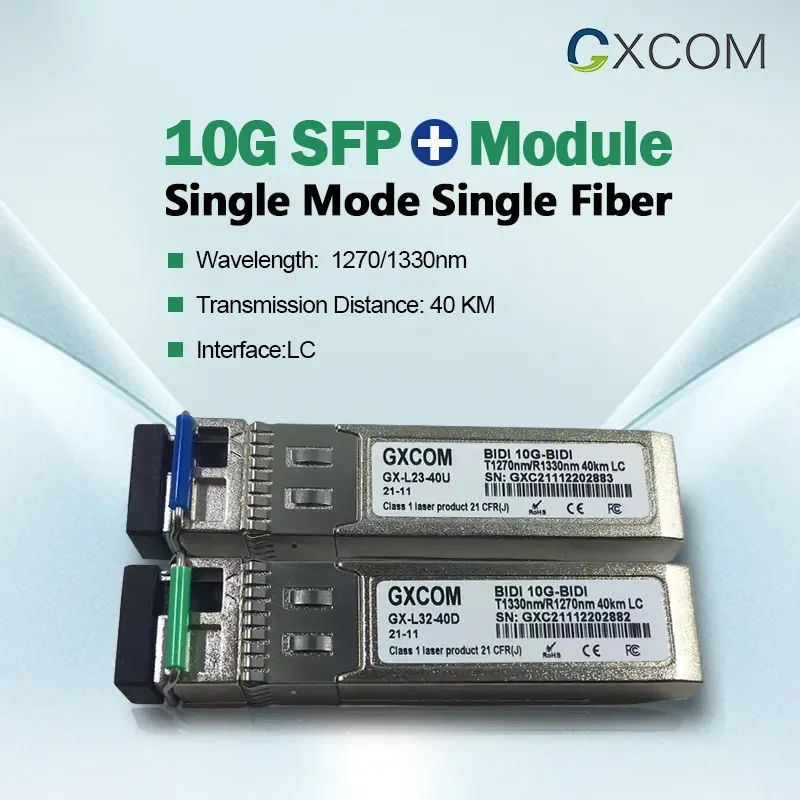Managed switches offer a range of management features that allow for greater control over your network. With VLAN support, you can segment your network into virtual LANs to improve security and efficiency. Quality of Service (QoS) ensures that critical applications receive priority bandwidth, optimizing performance for voice or video streaming. Simple Network Management Protocol (SNMP) enables remote monitoring and configuration of the switch.
On the other hand, unmanaged switches are more basic in functionality. They operate out of the box with no need for configuration or management. While this simplicity may be suitable for small networks with minimal traffic requirements, it limits your ability to customize or optimize the network.
One significant advantage of managed switches is their ability to be remotely managed. This means you can access and configure the switch from anywhere on the network using a web interface or command-line interface (CLI). Remote management simplifies troubleshooting, allows for firmware updates without physical access to the switch, and provides real-time visibility into network performance.
In contrast, unmanaged switch lack remote management capabilities. Any changes or configurations must be made directly on-site at the switch itself. This limitation can be inconvenient if you have multiple locations or if your IT team needs to manage the network remotely.
Managed switches are typically more expensive than their unmanaged counterparts. The additional features and capabilities provided by managed switches contribute to their higher cost. However, it’s important to consider the long-term benefits and potential cost savings that come with the enhanced management capabilities. If your network requires advanced features or remote management, investing in a managed switch may be worth the extra expense.
On the other hand, unmanaged switches are more affordable and straightforward. They are often used in small networks or home setups where simplicity and cost-effectiveness are prioritized over advanced functionality.
The complexity of your network plays a significant role in determining whether you should opt for a managed or unmanaged switch. If you have a large network with multiple VLANs, require QoS for specific applications, or need to monitor and manage your network remotely, a managed switch is likely the better choice. It provides the flexibility and control necessary to handle complex networking requirements effectively.
However, if you have a simple network setup with few devices and no need for advanced features or remote management, an unmanaged switch may suffice. It offers plug-and-play functionality without any configuration hassles.

Managed network switches offer a range of benefits that can greatly enhance the performance and security of your network. Let’s take a closer look at some of these advantages:
Managed switches come equipped with advanced security features, such as access control lists (ACLs), which provide an extra layer of protection for your sensitive data. ACLs allow you to control and restrict access to specific ports or devices on the network, ensuring that only authorized users can gain entry. This helps prevent unauthorized access and potential security breaches.
One major advantage of managed switches is their ability to prioritize critical traffic through Quality of Service (QoS) support. With QoS, you can assign different levels of priority to various types of network traffic, ensuring that important applications receive the necessary bandwidth and resources for optimal performance. For example, if you have a video conference running simultaneously with other internet activities, QoS allows you to allocate more bandwidth to the video conference, preventing lag or interruptions.
Managed switches offer the convenience of remote management capabilities, allowing you to troubleshoot issues and make configuration changes without physically accessing the switch location. This saves time and effort by enabling efficient management from a central location. Whether you need to adjust settings or diagnose connectivity problems, remote management provides flexibility and ease of use.
Another significant benefit of managed switches is their scalability options. These switches are designed with expansion in mind, making it easier to grow your network as needed. You can add more ports or stack multiple managed switches together for increased capacity and improved performance. Whether your network requires additional connections for new devices or demands higher bandwidth for increased data flow, managed switches offer flexibility in scaling up.
Unmanaged switches offer several advantages, making them a popular choice for small networks or home environments where advanced features are not necessary. Let’s explore the benefits of using unmanaged network switches.
One of the major advantages of unmanaged switches is their simplicity in setup and configuration. These switches are designed to be plug-and-play devices, meaning they can be easily connected to your network without requiring any technical knowledge or configuration skills. This makes them ideal for non-tech-savvy users who need a simple networking solution without the hassle of complex setups.
Unmanaged switches provide a cost-effective solution for small networks or home environments. Since they lack advanced features found in managed counterparts, unmanaged switches are generally more affordable. If you have a limited budget or don’t require extensive control over your network, opting for an unmanaged switch can save you money while still providing reliable network connectivity.
The plug-and-play functionality of unmanaged switches makes them incredibly convenient to use. Once connected to your network, these switches automatically detect and configure themselves without any user intervention. This feature eliminates the need for manual configurations or adjustments, making it easier for users who prefer a hands-off approach to networking.
Compared to managed switches, unmanaged switches typically consume less power. This lower power consumption can save energy over time, reducing both your environmental impact and electricity costs. If you’re conscious about energy efficiency and want to minimize your carbon footprint, choosing an unmanaged switch can be a step in the right direction.
Unmanaged switches are designed with simplicity in mind, making them suitable for non-tech-savvy users who just need basic network connectivity. With no complicated settings or configurations to worry about, anyone can easily set up and use an unmanaged switch without the need for extensive technical knowledge. This user-friendly approach ensures that even those with limited networking experience can get their network up and running quickly.
Managed switches offer greater flexibility compared to unmanaged switches. With managed switches, you have more control over your network and can customize settings according to your specific needs. You can prioritize certain types of traffic, set up VLANs (Virtual Local Area Networks), and even monitor network performance. On the other hand, unmanaged switches are plug-and-play devices that require no configuration. They are simple to use but lack the advanced features and customization options offered by managed switches.
If scalability is a concern for your network, then managed switches are the way to go. These switches allow you to expand your network easily by adding more ports or connecting multiple switches together. They provide better support for larger networks with numerous users and devices. Unmanaged switches, on the other hand, have limited port availability and cannot be expanded beyond their initial configuration.
Managed switches have the upper hand. They offer advanced security features such as access control lists (ACLs), which allow you to control who has access to your network resources. Managed switches also support features like port mirroring, which helps in monitoring network traffic for suspicious activity or troubleshooting purposes. Unmanaged switches lack these security features, making them more vulnerable to unauthorized access and potential security breaches.
Cost is an important factor when choosing between managed and unmanaged switches. Unmanaged switches are generally less expensive than their managed counterparts since they lack advanced features and configuration options. If you have a small-scale network with basic requirements, an unmanaged switch might be sufficient and cost-effective for your needs. However, if you require advanced functionality or have a larger network that requires scalability and enhanced security measures, investing in a managed switch would be worth considering.
Consider the level of technical expertise available within your organization before deciding between managed and unmanaged switches. Managed switches require more technical knowledge to configure and maintain. You need to have a good understanding of networking concepts and protocols to make the most of their advanced features. Unmanaged switches, on the other hand, are designed for ease of use and do not require any configuration or technical expertise.
 Do I need a managed switch for PoE cameras?
Do I need a managed switch for PoE cameras?
 How to do PoE troubleshooting?
How to do PoE troubleshooting?
 SFP Compatibility Guide and How to Use a Compatible SFP Module?
SFP Compatibility Guide and How to Use a Compatible SFP Module?